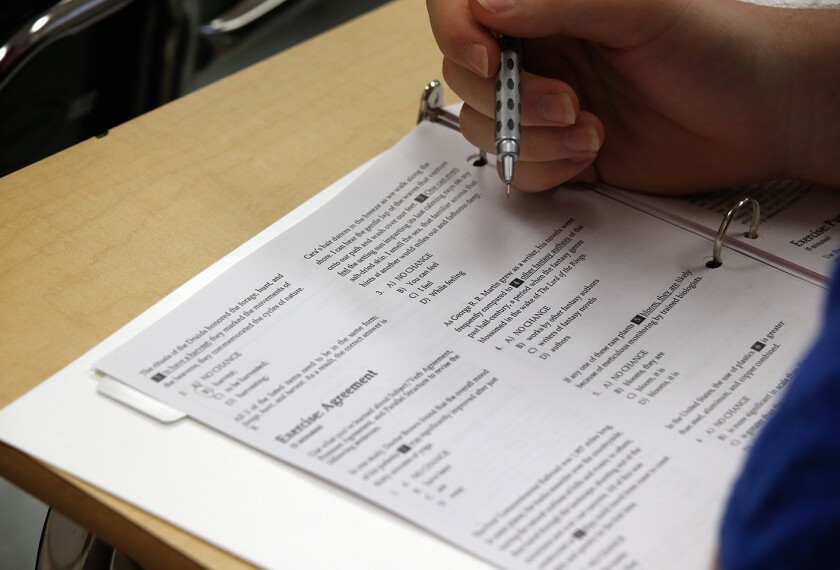A flap in Maryland over state reading-test scores is highlighting the difficulties of making schools’ accountability under the federal No Child Left Behind Act jibe with the rights of students with disabilities or limited English to accommodations in taking such tests.
At issue is the state’s treatment of the scores for thousands of Maryland 3rd graders who were accommodated on the reading portion of the Maryland Student Assessment—given for the first time last March—by having the test items read to them.
Those pupils’ reading scores, released to school districts early this month, were invalidated by the state because its testing experts said that items covering the decoding of text are meaningless when they are read to students.
The state had likewise invalidated reading scores in similar circumstances on the former state test, the Maryland School Performance Assessment Program.
But instead of throwing out the invalidated scores, as it had in the past, the state assigned those students the lowest possible scores on the reading section of the test and used the results to help determine whether their schools had made “adequate yearly progress” under the No Child Left Behind law.
As a result, schools with large numbers of 3rd graders who had received “verbal reading accommodations” on the test showed lower performance than they would have otherwise.
Officials of the 140,000-student Montgomery County school district in the Washington suburbs complained to the state that the invalidation of 832 students’ scores in the county resulted in some schools’ unfair portrayal as being “in need of improvement” under the law, a label that has significant consequences.
Seven of the 44 county schools that failed to reach their targets for adequate yearly progress would have met those goals if the reading scores for the pupils with verbal accommodations had been discarded instead of being reduced to the lowest possible scores, the officials said.
The state’s method of calculation puts at eight the number of schools in the county that would have met their AYP targets if the students’ scores had been left out, according to Ronald A. Peiffer, the deputy state superintendent.
Statewide, 30 out of 511 schools that did not make their targets for yearly progress might have met those marks if the disputed reading scores had been discarded, he said.
Reporting Problem
Jerry D. Weast, the superintendent of the Montgomery County schools said he became aware of the problem three weeks ago, when the state provided letters with children’s test scores meant for mailing to parents.
In the letters, the reading scores for 3rd graders who had received verbal accommodations showed only asterisks, with notations that parents should call their schools for an explanation.
Mr. Weast said he has withheld the letters “until we try to figure out how best to inform the families” of the 832 children who did not receive reading scores.
The problem is likely to recur because the same test will be administered in March. In addition, the 4th grade version of the test, which will be administered for the first time next spring, also has decoding items that the state will invalidate if they are read to the students, state officials say. After 4th grade, the reading test does not cover decoding, and verbal delivery of items on reading comprehension does not result in invalidation of the scores.
Last week, the Montgomery County school board unanimously passed a resolution asking that the state, in calculating schools’ progress, throw out the reading scores of students who received the verbal accommodations, and that the state provide an appropriate test for those students.

|
State officials say they recognize the merit in the county’s complaint, but for now they are bound to include the altered scores in AYP calculations because that step is part of the state’s consolidated plan approved by the U.S. Department of Education. The plan assures that at least 95 percent of Maryland’s students are tested.
“We did agree we would count everybody’s scores,” Nancy S. Grasmick the Maryland superintendent of schools, said in an interview last week. Changing that plan would require the federal Education Department’s consent, she said.




